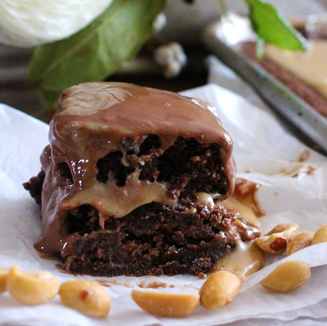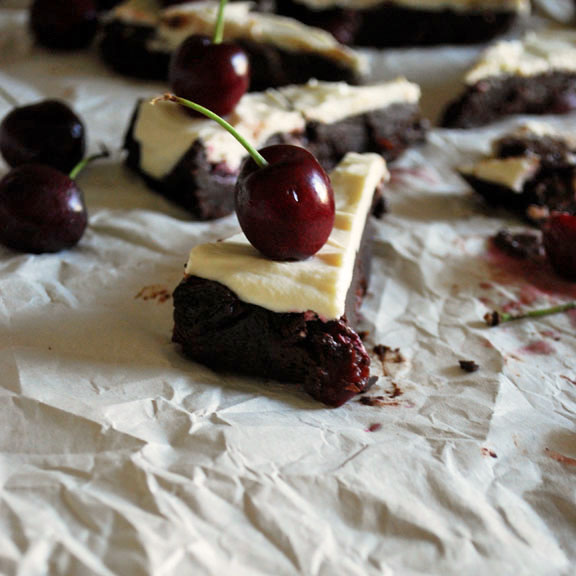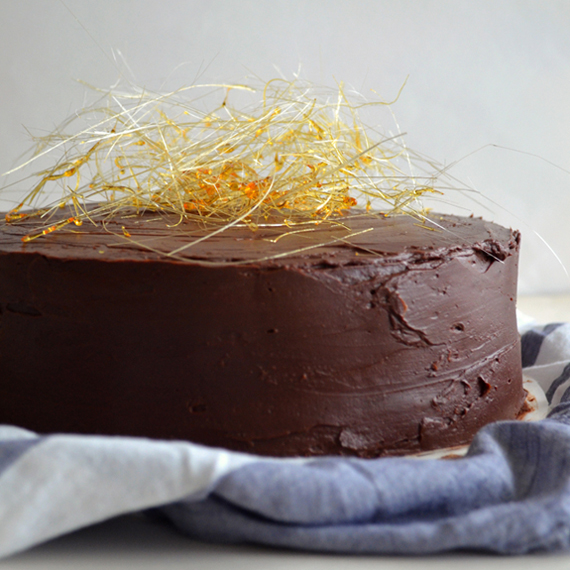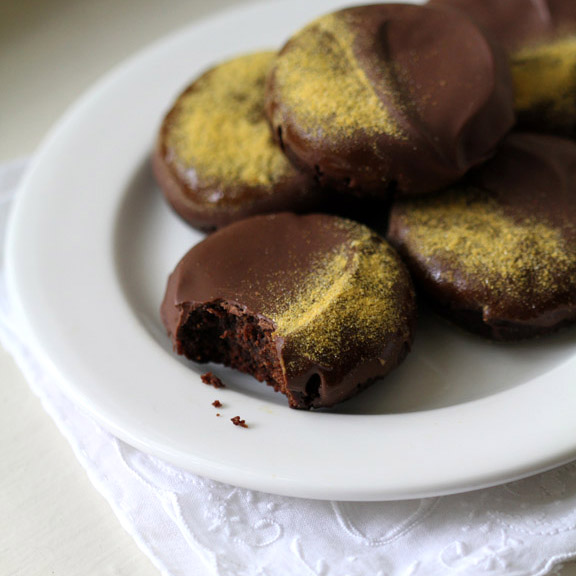I got interviewed for an article about the bakers on campus for my school paper last year, which the reporter pitched to me as a story about "the art of dessert" when she asked for an interview. It was a lovely idea, but I didn't quite agree with the concept. Yes, dessert can be beautiful, but ultimately making food--creating sustenance and satisfying that animal part of us--is a very humble thing.
Cooking and baking can feed our artistic side, but it also provides a much more tangible, visceral satisfaction that few other activities can. I enjoy and appreciate food styling and plating (much more than when I first started blogging), but my love for baking lies mainly in that ability to feed people. It taps into a shared experience and a shared need: everyone likes eating, everyone has opinions on food.
For me, brownies illustrate this need better than anything. (Granted, they don't actually satisfy that much in the nutritional department, but still). While I tend to be quite a snob about food, brownies might actually be one of my favorite desserts to make and eat. There's something so physical and satisfying about making them, with just you, a bowl, and a spatula, transforming some pantry ingredients into a smooth, shiny batter and then into dense, chocolate-y bars.
They are plain, dark, undecorated, and unapologetically so. They're not here to look cute, but to feed that hankering for something rich and indulgent. Brownies are for the days when we feel we could absolutely murder a chocolate cake, when we just don't want to be dainty.
Growing up, brownies were always the forbidden dessert. My mother wouldn't let them into the housing, deeming them The Epitome of Junk Food (and this is coming from the woman who let me eat cheesecake and cream puffs for breakfast on a regular basis). So of course, I ate them at every chance I got, and I have yet to grow out of that impulse.
While I usually rely on Alice Medrich's cocoa brownies, I wanted to create something that was slightly less fudge-like. These brownies are still dense and chewy, but with a slightly more defined crumb, just a teensy bit further down towards the cake end of the spectrum. Looking back, these probably would have worked better for my Cherry Goat Cheese Brownies, since the cocoa brownies were a little too dense. (I spent that post waxing poetic about literary philosophy...something about brownies seems to make me particularly chatty.)
The combination of both cocoa powder and chocolate gives these brownies a more complex and deeper flavor. I like using higher quality chocolate (Lindt 90% dark for these), but you really don't have to be picky for brownies.
Make sure to beat the batter well after adding the eggs. It's the process of dissolving the sugar in the eggs and aerating them that creates that signature crackly crust on top. Don't break out the mixture for these; one of the joys of making brownies is putting in the elbow grease and watching the batter transform before your eyes.
-Caroline
Classic Chewy Brownies
Click here for the printer-friendly recipe
Yields: 16 brownies
Loosely adapted from The Tart Tart
Ingredients
½ cup butter, cubed
3.5 ounces unsweetened or bittersweet chocolate, roughly chopped (at least 70% cocoa solids)
¾ cup granulated sugar
2 eggs, cold
¼ cup cocoa powder
¼ teaspoon salt
⅛ teaspoon baking powder (optional; you can omit this if you want a more dense, fudgy-er brownie)
¼ cup all-purpose flour
Directions
Preheat the oven to 350 F. Line a 9x9 inch pan with aluminum foil, and grease the foil.
In a heatproof bowl over a pot of simmering water, combine the butter and chocolate. Heat, stirring occasionally, until melted and smooth.
Mix in the granulated sugar. Beat in the eggs one at a time, and beat vigorously for about 3 minutes. The batter will look lumpy and grainy at first, but keep on beating until it turn thick, smooth, and glossy.
Mix in the cocoa powder, salt, and baking powder, then fold in the flour.
Pour the batter into the pan, and bake for 18-20 minutes. You don’t want to over-bake them! The brownies will have set and risen oh-so slightly, but the center should not be completely firm. A toothpick inserted into the center should be covered with moist crumbs.









